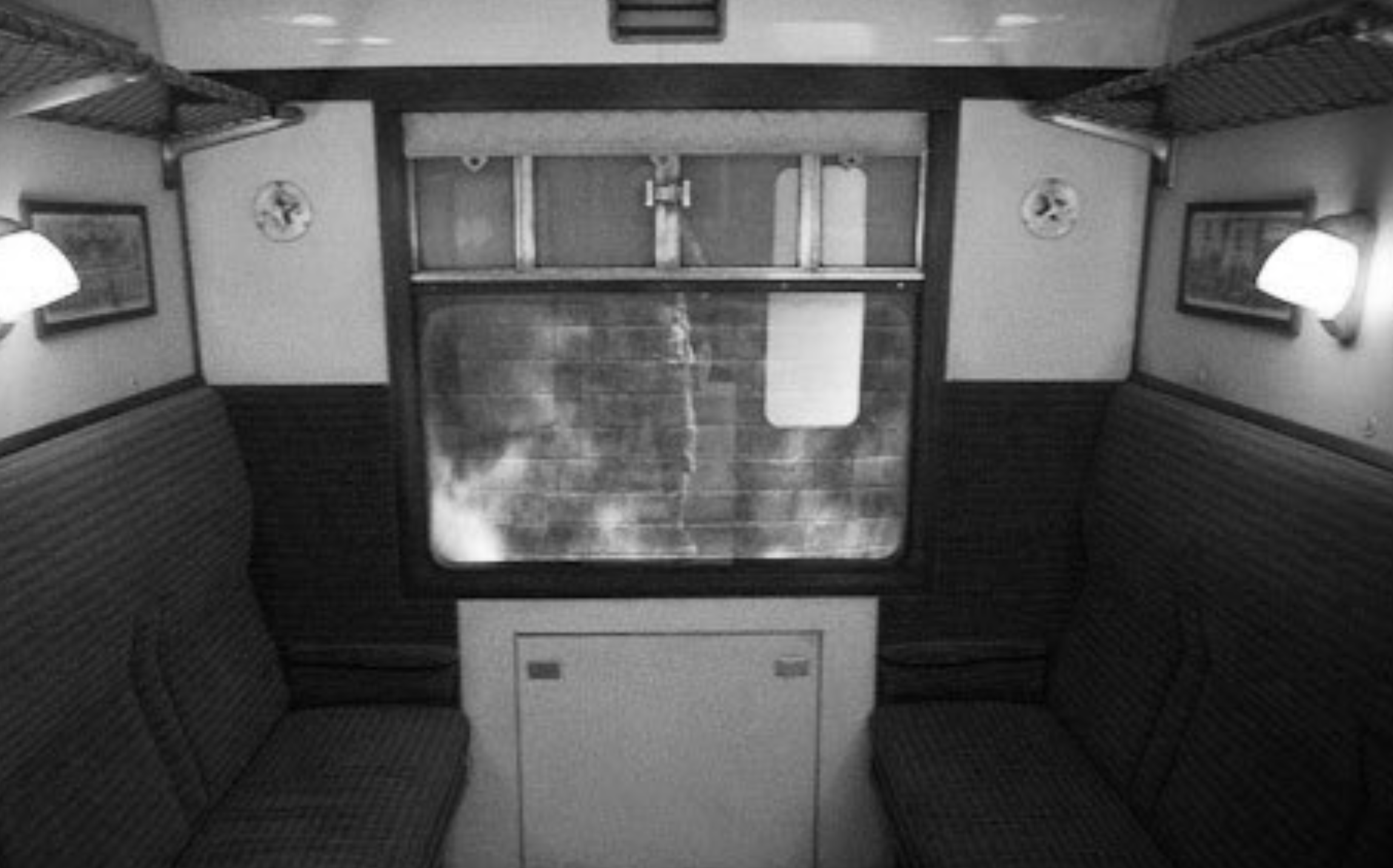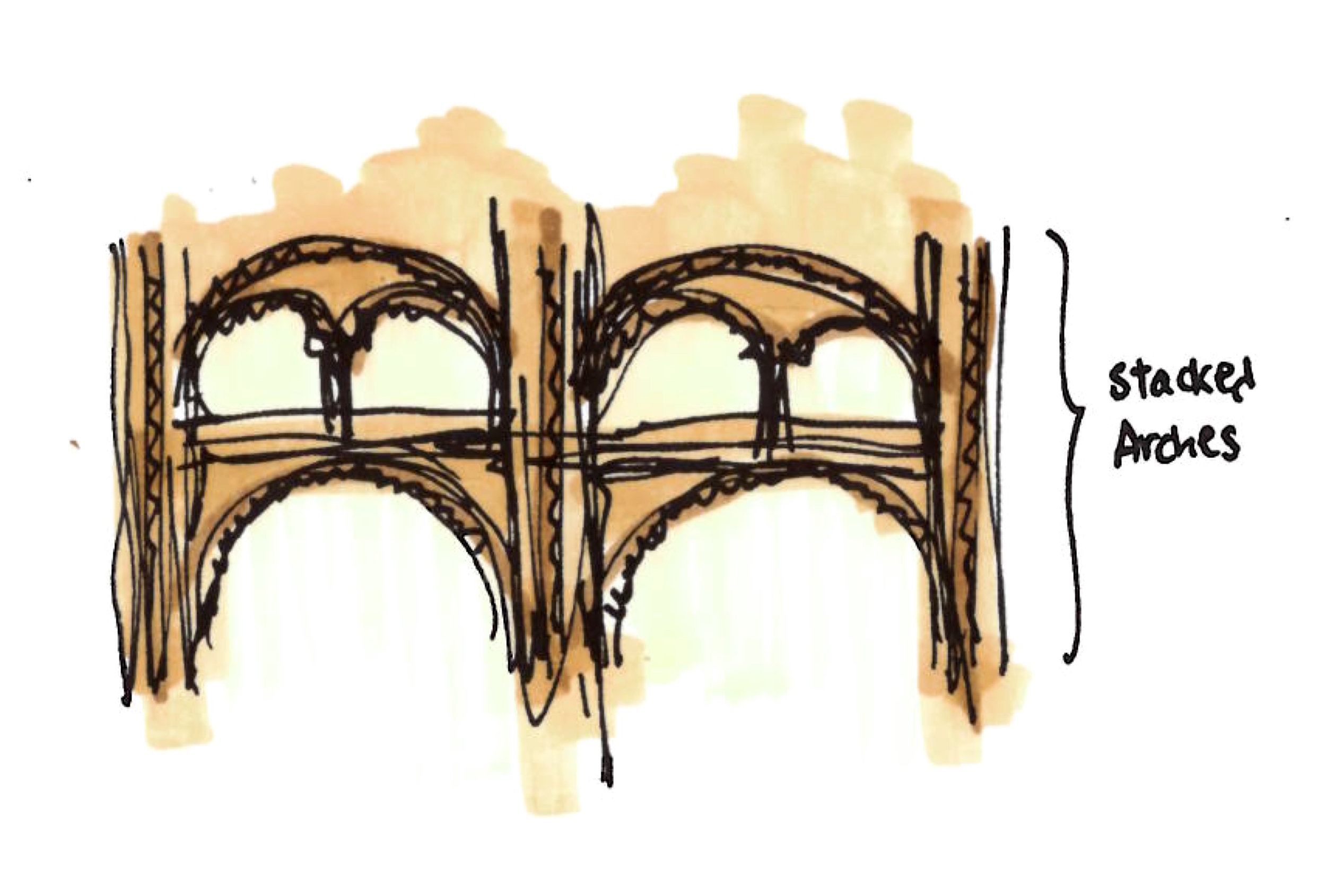The Imperial Railway I: Concept & Architecture
The Imperial Railway is a unique attraction concept that tells the story of an unfolding drama surrounding a mysterious suitcase on an unusual train service. Ultimately, it is a combination of a participatory theatre and a high-tech motion simulator train ride set in a rustic abandoned eclectic train station.
Guests entering this attraction will first be greeted by the industrial neo-romanesque styled Imperial Central Station, before being briefed about their mission of delivering an mysterious suitcase to a wealthy English antique collector in the pre-show room. After boarding a 'normal' train service form the station's expansive concourse, the journey quickly escalates into a life-and-death situation when the guests discover they have been ambushed. As the guests discover the power and magic that they mysterious suitcase holds, they are placed at the centre of a mini pyrotechnic, project and stunt actions when an undercover conductor attempts to save the lives of everyone onboard.
The Concept
The Imperial Railway attraction is an attempt to combine an immersive experiential theatre with a thrilling motion simulator ride. First, in order to provide some context, allow me to explain these two classes of attractions separately.
Experiential Theatre
An experiential theatreis a performance where the audience is placed within the staged environment. The performance takes place all around the audience, creating an authentic, immersive experience. Further, guests will often be actively involved in the storyline by interacting with the actors, instead of just passively perceiving the events unfolding on stage. Due to guests involvement, the outcome of the performance can even be different every time.
A famous example of an experiential theatre is the infamous London Dungeon where guests are led through a labyrinth of authentic dungeons as performers retell the myths and legends of the dark side of London's history.
Motion Simulator Ride
On the other hand, amotion simulator ride is an attraction type where guests board an enclosed vehicle supported by a motion base. Through the (limited) motion of the vehicle and a synchronised video displayed inside, which usually simulates the view outside a window, the authentic sensation of flying / travelling on a train is re-created. As guests lack a view of the outside, they have no bearing on an external reference frame. Thus, by simulating acceleration on the spot, the motion base can convincingly reproduce any believable motion. (This is the basis of Einstein's theory of special relativity!) Interesting examples include Star Tours at Disneyland and Hogwarts Express at Universal Studio.
In Star Tours, the ride simulates the motion of a flying spaceship across intergalactic space. However, guests are, in fact, boarding an enclosed hydraulic motion base cabin, featuring 6 degree of motion. Similarly, in Hogwarts Express, the ride takes guests across the British country side to and from Hogwarts and King’s Cross station. However, guests are, in fact, seated in a funicular train travelling in a studio backlot with screens as windows, displaying motion-synchronised graphs.
With these in mind, The Imperial Railway is the combination of these two types of distinct experiences. The idea is rather simple: An experiential theatre that unfolds on a moving train.
A train cabin setting is a very interesting stage for an experiential performance because, in a way, the interior of a train is something everyone is familiar with. As such, the environment itself makes the performances ever more believable and convincing. As I will detail later in the article, the confined space and the elongated geometry of a train cabin further creates opportunities for very exciting live stunts and actions. In the mean time, trains are also inherently moving objects, making them ideal candidate for a motion simulation vehicle.
Ride Entrance & Architecture
Guest's journey to The Imperial Railway begins at TheImperial Central Station. The station, which has a overshadowing facade and an animated skyline, is intended to be the dominating visual element of the themed area. It is also crucial in setting the tone for the attraction itself ahead.
The flat station facade is placed at an angle to the main street of the themed area. This enforces a perspective grand introduction of the station as guests turn around the corner and see the station unfolding before their eyes. This in turn echoes the majestic and grand construction of the station itself. This technique is used in a few Disney attractions, most notably the Tower of Terror at WDW and its tragically deceased sister in California.
Eclectic Architectural Style
The station's architecture sets the attraction to roughly mid-to-late-19th century. This is the time when eclecticism was the prevailing architectural style around Europe. The industrial revolution has challenged architecture on multiple levels. The advancement of engineering had enabled new materials such as iron and glass to be used extensively in large-scale constructions. For example, the large cast iron span at St. Pancras International, London (1868). At the same time, the proliferation of railways, a new and exciting mean of transport, created a completely new type of building --- the train station.
Foster the Sense of Adventure & Exploration with Architecture
The Imperial Central Stationis designed with an eclectic style, which is characteristic of its incorporation of a wide variety of previous historical styles to create something original. Eclecticism was the prevailing architectural style in Europe and beyond during this time period. While the decision to use this style is partly based on historical authenticity, the notion of combining motifs coming from different places and times fits very well with the attraction theming that is travelling and voyage.
To begin with, the station facade layout is reminiscent of early Christian Romanesque churches (11th - 12th Century). The inclusion of the twin west towers in the front of cathedrals or abbeys is common in romanesque style constructions. In the case here, the two towers further flank a central portal which acts as the station entrance.
The twin west towers in Romanesque architecture is often further emphasised by the use of concentric arches, or in this case, the industrial cast-iron-and-glass arched window into the concourse. Stacked arch is also another great innovation of the Romanesque style, which has been incorporated in various parts of the facade with an industrial flare.
Beyond the overarching Romanesque touch, the Imperial Central Station was further inspired by three main buildings that really impressed me when I backpacked Eastern Europe during summer 2015.
First, we have the two main train stations in Budapest, Hungary: the Keleti Railway Terminal and theHyugati Railway Terminal. The former was completed in 1884 and is heavily eclectic in style. I have mainly replicated it's columned entrance and the cast-iron-and-glass work above into the Imperial Central Station design. The heavy accentuation of the joints between adjacent blocks of masonry of the ground level of the Keleti Terminal has also found it's way into the Imperial Central Station as part of an effort to give the station an overall rustified feel.
On the other hand, the Nyugati Terminal, built in 1877, has a very industrial french Baroque style. This is no surprise as it was designed by French engineer and architect Gustave Eiffel, who is famous for the Eiffel Tower in Paris. I have borrowed a lot of elements of the two structures on the side of the Nyugati Terminal to form the right tower of the Imperial Central Station, particularly the arches, domes and roof. And, did I mention the Nyugati Terminal is also featured in Tom Cruise's Mission Impossible: Ghost Protocol!?
Last but not the least, theSt. Mary's Basilica in Krakow, Poland has also provided heavy inspiration for the station. In particular, the brick gothic styled ornamentation of the left tower, and the byzantine styled pendentive domes on the right tower. The stark contrast in the architectural style between the two towers create an interesting rhythm and personality for the station.
Using Architecture to Tell Stories
The asymmetrical towers might look weird at first sight. I agree. However, it is intentional, and I think it is a beautiful exemplification of how architecture can be used to tell stories:
Legend has it that the Imperial Central Station was built and owned by a wealthy businessman who had two beloved sons. When he passed away, he dedicated the two towers of the station to his two sons as a gesture of his love for them: The left one to the older brother, and the right one to the younger. Unfortunately, the father's untimely death meant the two brothers are now responsible for overseeing the completion of the station. The rivalry between the brothers led to a race to finish the two towers. They decided to compete, and see who can build a taller structure. The brothers commissioned two architects separate, and had designed the towers to embody their own respective personalities. This explains the stark difference in style between the two structures. Ultimately, the older brother's tower overshadowed his younger brother's. However, by doing so, the right tower also has a shallower foundation and lower quality material, which explains the more deteriorated look we see today.
This backstory is modified and amalgamated from popular stories behind cathedral / church architecture around Europe.
The Show Building
The station facade only extends towards skin-depth of the show building. The show building hides behind the attraction facade.
I will go through the ride experience in detail in the next section. However, for now, allow me to briefly orientate you around the show building. Guests first enter from the bottom left of the structure, which then leads to the queueing and pre-show area. This area is themed to a Victorian train waiting room setting. Guests will then broad the train in the adjacent main loading bay area. The train will then snake through the backstage area and enter one of two ride simulators, where the majority of the ride take place. At the end, the train will follow its original path back to the platform.
When guests disembark, they will exit through the gift shop (of course!) on the right of the building facade. The layout plan above also details the ride maintenance and track-switch mechanism in the backstage area.
In the next section, we will delve into the actual ride experience the story of the attraction.


















